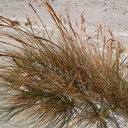Inflammatory mediators in children with protein-energy malnutrition.
Słowa kluczowe
Abstrakcyjny
Edema is a typical sign in kwashiorkor, which is present in a subset of patients with protein-energy-malnutrition (PEM). The pathophysiology of this edema is not well established. One of the abnormalities found in kwashiorkor is reduced concentrations of antioxidants, suggesting a compromised capacity to neutralize free radicals, which are known to induce tissue damage. We have studied plasma concentrations of several mediators of the inflammatory cascade. Concentrations of interleukin 6 (IL-6), C-reactive protein, and the soluble receptors of tumor necrosis factor alpha (sTNFR-p55 and sTNFR-p75) are greater in children with PEM, particularly in those with kwashiorkor, whereas soluble receptors of IL-6 (sIL6R-gp80) and IL-1 receptor antagonist concentrations are not significantly different from those of healthy children. In addition, concentrations of IL-6, sTNFR-p55, and sTNFR-p75 are greater in kwashiorkor patients irrespective of the presence of infection. Antioxidant status, as determined by plasma concentrations of glutathione and vitamin E, is significantly reduced in kwashiorkor patients. These data support the notion that children with edematous malnutrition show increased inflammatory reactivity that may contribute to edema formation.



